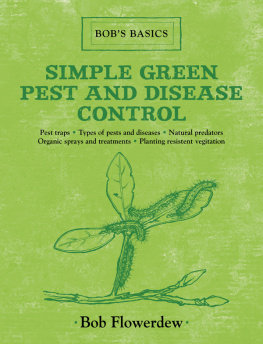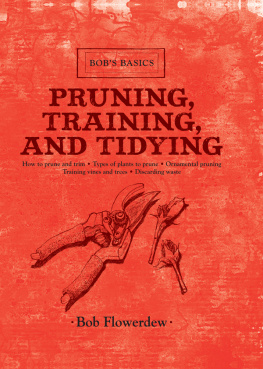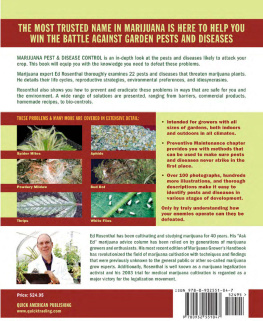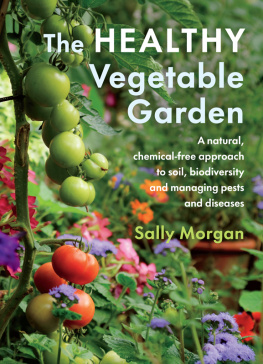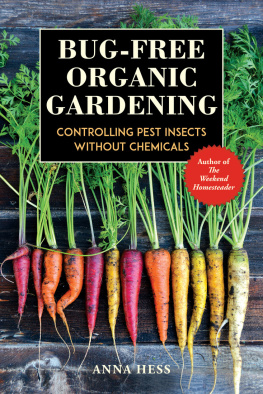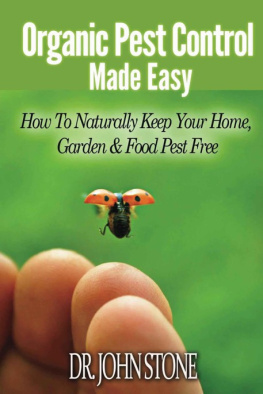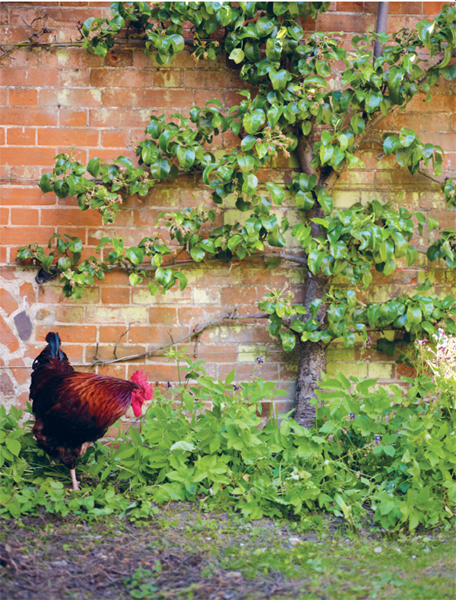Copyright 2012 by Bob Flowerdew
Design 2010 by Kyle Cathie Limited
Photography 2010 by Peter Cassidy
Illustration 2010 by Alison Clements
All Rights Reserved. No part of this
book may be reproduced in any manner
without the express written consent of
the publisher, except in the case of brief
excerpts in critical reviews or articles. All
inquiries should be addressed to Skyhorse
Publishing, 307 West 36th Street, 11th
Floor, New York, NY 10018.
Skyhorse Publishing books may be
purchased in bulk at special discounts
for sales promotion, corporate gifts,
fund-raising, or educational purposes.
Special editions can also be created to
specifications. For details, contact the
Special Sales Department, Skyhorse
Publishing, 307 West 36th Street,
11th Floor, New York, NY 10018 or
.
Skyhorse and Skyhorse Publishing are
registered trademarks of Skyhorse Publishing,
Inc., a Delaware corporation.
Visit our website at
www.skyhorsepublishing.com.
10 9 8 7 6 5 4 3 2 1
Library of Congress Cataloging-in-Publication
Data is available on file.
ISBN: 978-1-61608-634-3
Photographic Acknowledgments:
All photography by Peter Cassidy except
pp. 38, 95, 96, 104, 109 by Fran Yorke
and p. 52 by Bob Flowerdew
Printed in China by 1010 Printing Ltd
Introduction
Some see gardening as a war against pests and diseases, however, there is another way: to harness nature using the natural checks and balances for our purposesthat is, to control the pests and diseases. And it is only control we are after, not eradication. Even if it were possible to eliminate any single one of them, it would only be temporary as they would soon be back. A pest outbreak in your garden will probably be repeated in every other one up and down the block. There are bad years with aphids everywhere, then other, good years with ladybugs everywhere and few aphids evident. We cannot escape from the vast majority of common woes, but we can minimize their damage and annoyance. And rather than throw poisons about ineffectually, we can use our wit and cunning to outmaneuver problems using simple greener methods.
Gardeners have always been good at observing, working out what is happening, then finding ingenious ways of altering it. Most of the clever ideas in this book were conceived of by countless gardeners before now, but as so few rely on some product, many have not been widely publicized. Each is not an immediate solution, with a pile of corpses proving its efficacy. Here we are merely shifting the balance, not eradicating the enemy. There is not just one answer but a range of controls we can employ. We create multiple layers of defense to win the battle for our flowers, fruits, and vegetables despite the pests and diseases, by thwarting rather than eliminating them.
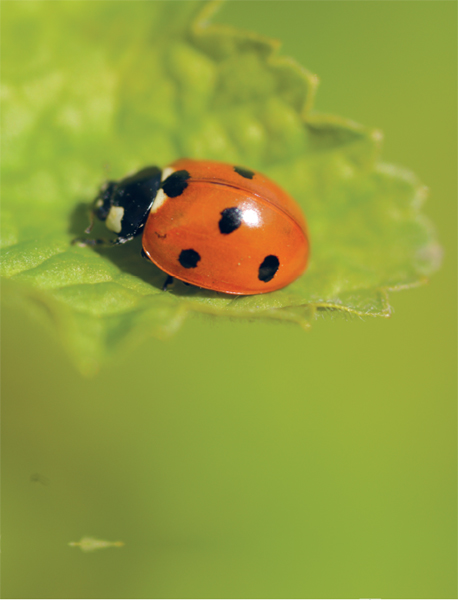
And we have a huge advantage; we can be forewarned so that each year we can take actions before known problems arise. For example: by covering your carrots with fine-mesh netting after sowing, you prevent carrot root flies reaching them to lay their eggs, so they are forced to go elsewhere and will lay them fruitlessly on the compost heap where you have lain some carefully bruised carrot leaves to lure them.
There is a huge range of acceptable and efficient controls for most pests and diseases and it is up to us to employ those most suitable to our particular circumstances. And we should choose not just one but a selection of those that have already proved most effective. Then we can rest content that our hard work will come to fruition.
Why exercise pest and disease control?
The classic responses are that, without control, we experience unacceptable loss of yields or damage that spoils the pristine appearance of our plants. This is indeed true; not only do pests rob us of crops or flowers directly, or indirectly by weakening the plant, but others spread diseases, causing further damage. For example, the Aphanomyces root rot pathogen of sugarbeets survives for over twenty years as resistant spores in the soil, and so the cycle continues. Some pests and diseases are devastating, such as gooseberry sawfly that, when left unchecked, may totally defoliate a bush, or potato blight that wipes out whole crops overnight.
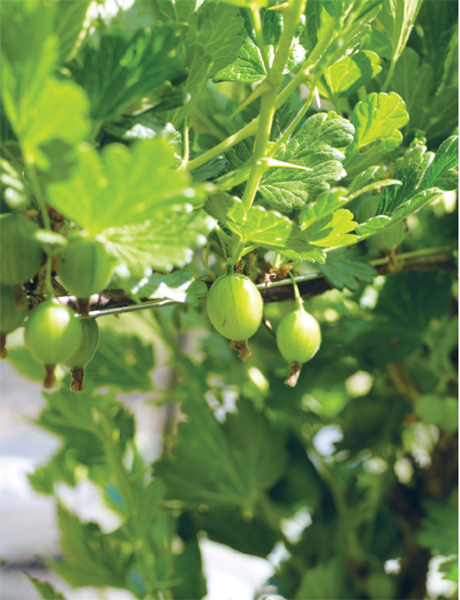
Without prompt control, sawfly caterpillars could strip off every leaf
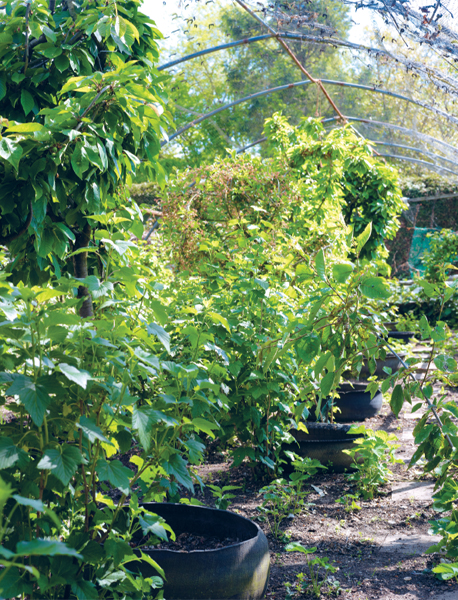
A fruit cage makes more difference than all other pest and disease controls put together
Sometimes you have no choice but to tackle the pests. In some countries, there are laws demanding you report or treat certain pests or diseases, that you must control others and you are forbidden to import or grow some plants because these may encourage problems. For example, in the UK you must report Colorado beetles (yellow ladybugs scoffing your potatoes), prune out and burn plum branches with silver leaf disease, and you may not plant Laxtons Superb pear, as it is prone to fireblighta widespread fungal disease. In some U.S. states, berberis was banned as it was thought to carry wheat rust, and blackcurrants are banned in others.
One reason why so much spraying was done in the past was because of a fear that problems would get worse and would spread to everything else. Although very few pests, such as slugs or rabbits, may attack almost anything, most are very specific about their diet and seldom move to unrelated plants. Even fewer diseases spread widely as they are often specific to certain plants. However, you can understand the fear; some years everything starts to get mildew or rust, but thats because the season favors themhollyhock rust does not move to leeks, its just that both suffer their own version at the same time. Better prediction of when diseases such as potato blight are probable, for example in warm moist weather, at least allows a reduction of controls at less risky times.
Because common pests and diseases often attack popular plants, one way to avoid many of them is to grow the rare and unusual rather than the commonplace. There are far more pests and diseases for radishes, roses, and rhododendrons than for aronia, arbutus, and artichokes.
Why not to control at all
If you cast your eyes around almost any flower garden, at first glance all usually appears well. Look closer, though, and you will find that almost every plant has some minor damage, but overall these minor defects do not seriously impact their appearance or yields. Although youre not deliberately exerting much control, inadvertently you have done so by creating a rich diversity of plantsfar more variety of flowering plants than youd find in the same area in untrampled nature. With these plants supporting a diversity of life, you get much more passive control. Basically, although pests are there, there are also many things looking for lunch who control them for you.
So, simply because of the wide range of ornamentals we grow and the diversity of wildlife attracted to them, these are inherently easier to keep clean than the vegetables and fruits. Likewise, few diseases infect them, usually affecting but one or two, because so many vegetables and fruits are closely related they may suffer more as diseases and pests spread among them rather easily. However, even so, seldom does one reach epidemic proportions.

